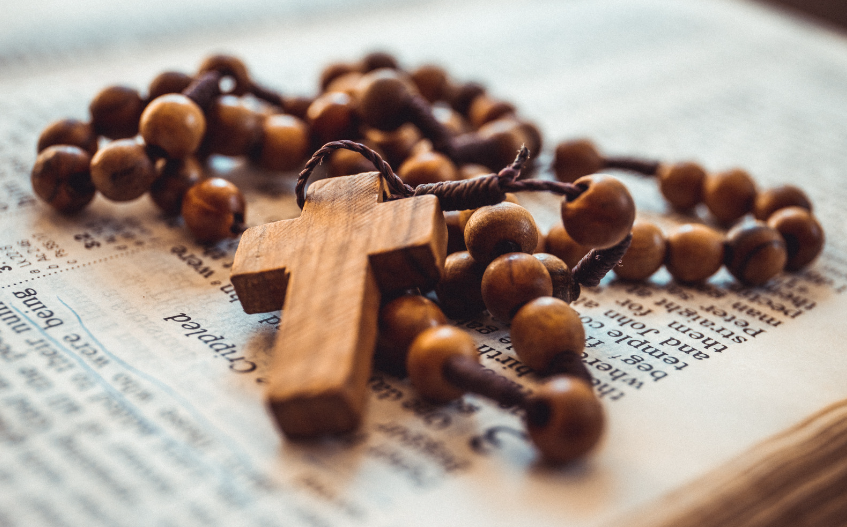The Rosary has its origins in a variety of prayers practiced in the early days of Christianity. This dotted rope is a prayer ritual that has been profoundly popular for many centuries. While it’s known that it is a kind of prayer for Catholics, its origin has generated some controversy.
Just like the third-century Christian hermit and monks, it is used to count special prayer recitations. As such, prayer ropes have been around since the days of the Desert Fathers in the third and fourth centuries.
Back in the day, devout Christians were famous for using the Pater Noster cord when praying the 150 Psalms. The 150 Psalms was a daily recitation that was made by Christian monastics when praying during the canonical hours.
All the monastics who had difficulty reading recited the Pater Noster instead of the 150 Psalms. So, they employed knotted cords to keep track of how many times they prayed the prayers.
In line with a Dominican tradition, the Blessed Virgin Mary reportedly handed out the Rosary to Saint Dominic after a supernatural encounter. That supernatural encounter was later known as – Our Lady of the Rosary.
Saint Alan is another man who claimed to have received orders from the Lord Jesus to revitalize the use of the Rosary through a vision.
Unfortunately, subsequent documents never corroborated the view that Saint Dominic had anything to do with the origin of the Rosary.
People started directing prayers to Mary as early as the seventh century. The first kind of prayer seemingly directed to Mary contained the phrase – beneath your compassion, we take refuge.
Around the Middle Ages, documents show that both prayers (Our Father and Hail Mary) were recited with beads. Slowly but surely, the Hail Mary prayer metamorphosed into a devotional prayer. Later, the prayer was promoted by a Dominican priest, spreading it across Flanders, France, and the Netherlands.
Pope Pius V implored the whole of Europe to pray it before fighting the battle of Lepanto. The victory after that battle informed the name – Our Lady of the Rosary!
It was officially established as a devotion in the Catholic church in 1959. Peter Canisius was later recognized for adding the line – Holy Mary, Mother of God, pray for us sinners – to the rosary prayer.
Between the 16th and 20th centuries, its structure remained the same. After the 20th century, there were calls from someone at Vatican II for its structure to be changed. However, Pope Paul VI bluntly refused the idea, asking why should anyone consider altering the structure of something as perfect as the Rosary. According to him, shifting this sacred ritual may seem somewhat sacrilegious.
Let’s embark on an experiment together. Take your rosary or any set of prayer beads. Set aside 15 minutes – no distractions allowed.
As you move through each bead, focus on a positive affirmation or prayer. Feel the texture of each bead, let your fingers trace their journey.
You know what happens next? A quiet transformation.
You’ll notice an inner calm seeping in because your mind is singularly focused on one task at hand – moving from one bead to another while reciting your prayer. This is the essence of using rosaries – intense concentration leading to heightened spirituality.
Give it a try! Once you’ve experienced the serene focus that comes with using a rosary, the chaotic whirlwind of daily distractions will seem less daunting.
Simplicity leading to serenity – sounds paradoxical, but that’s the magic of the rosary.
I’d love to hear about your experiences.


